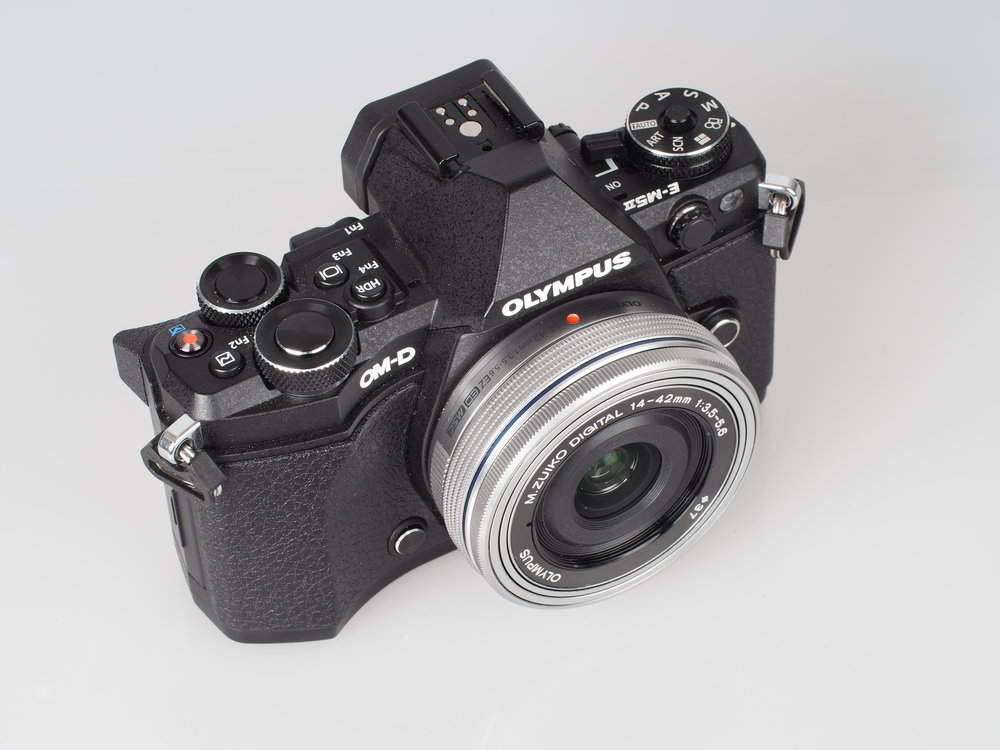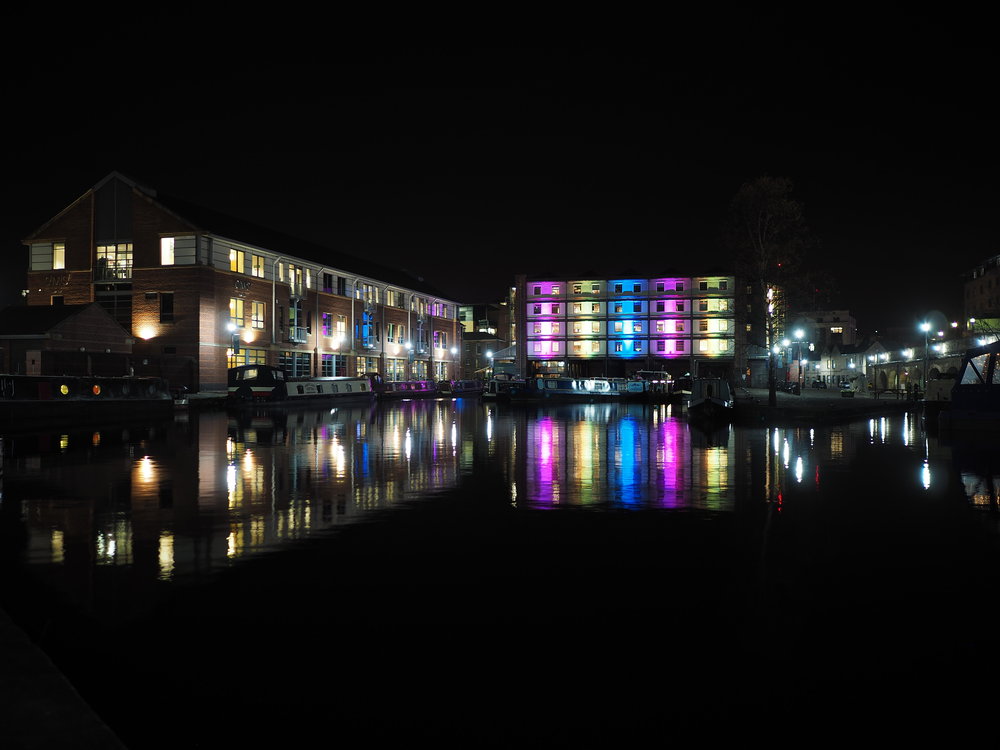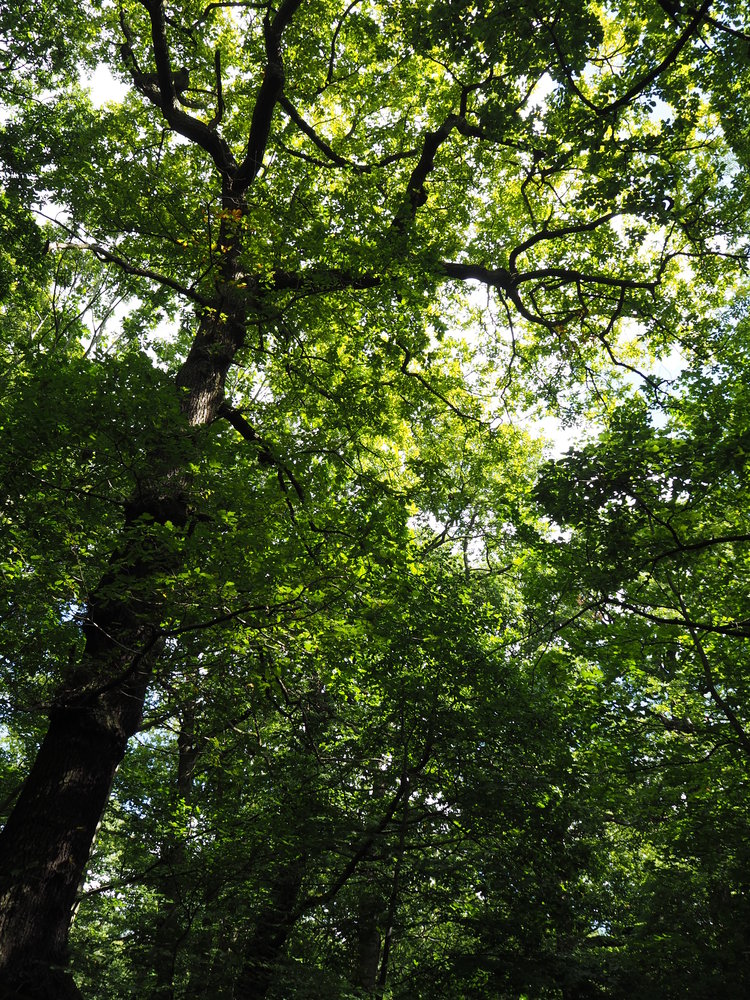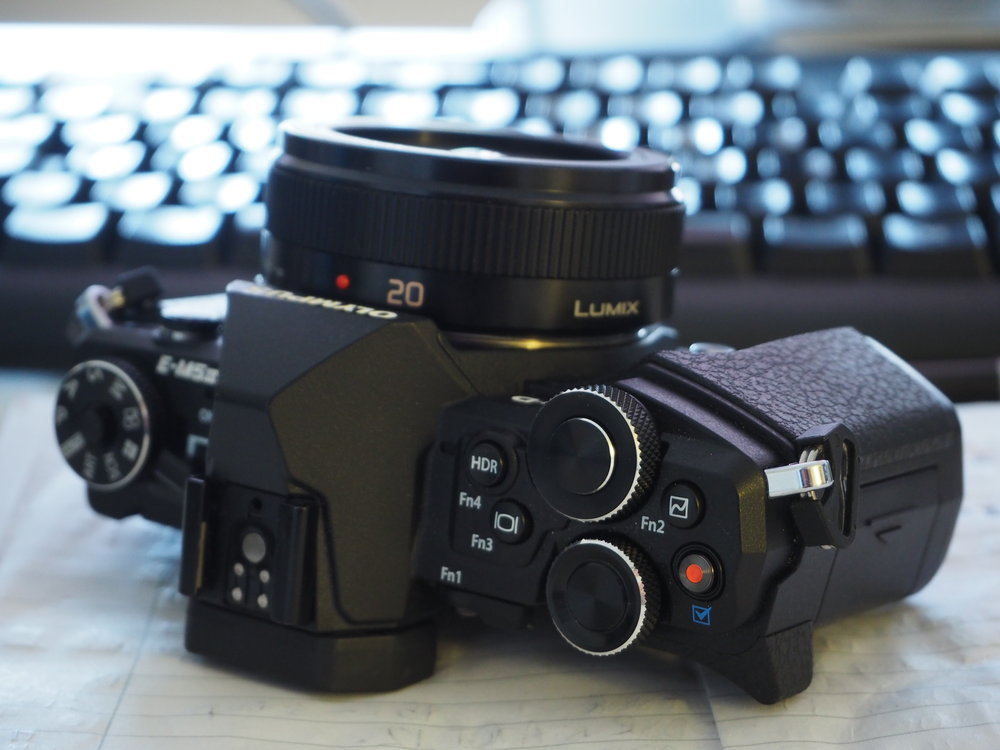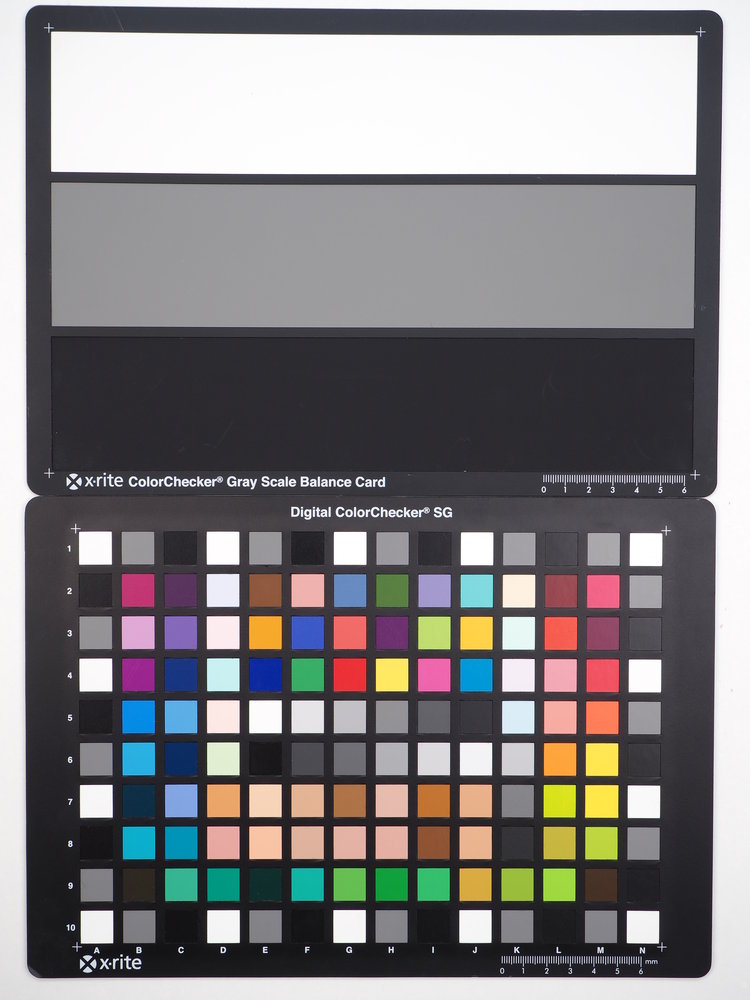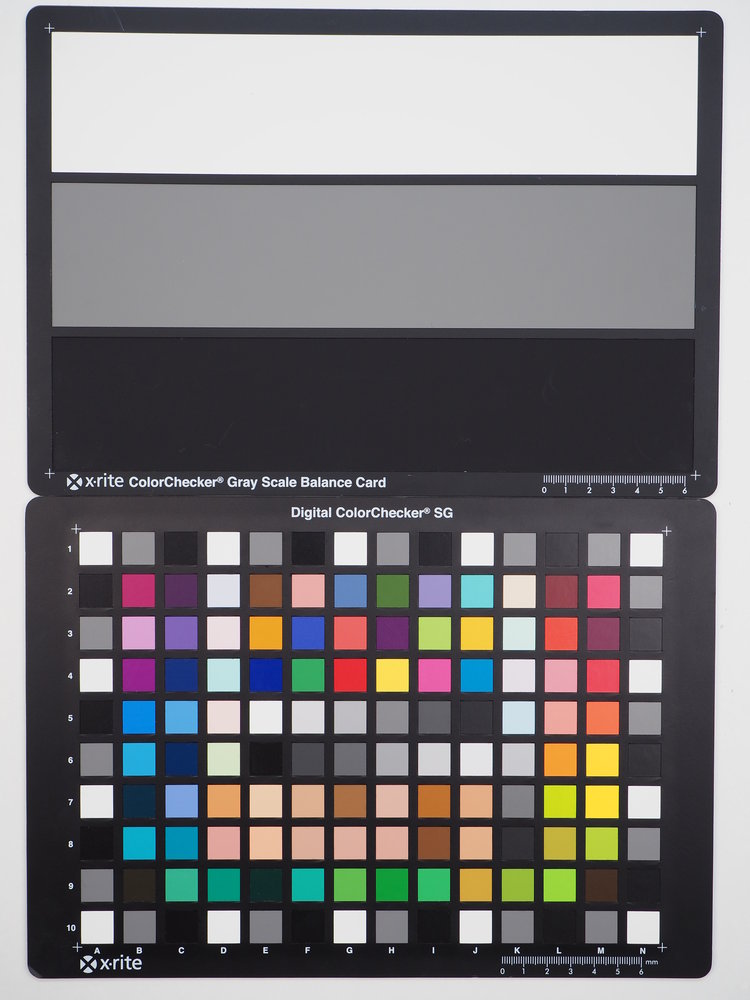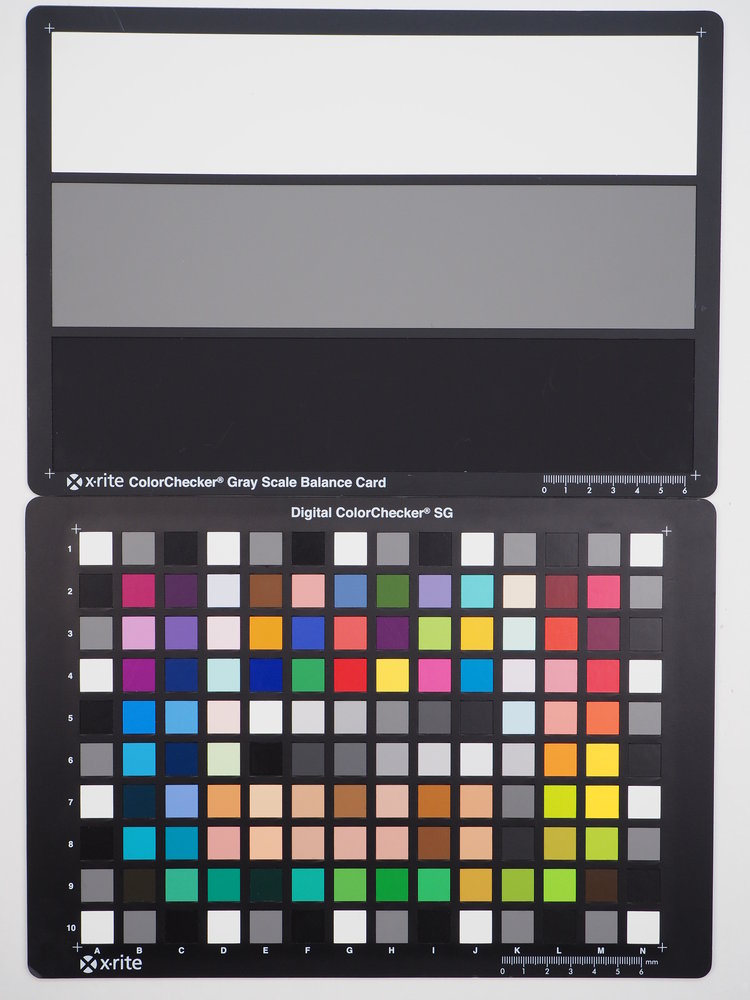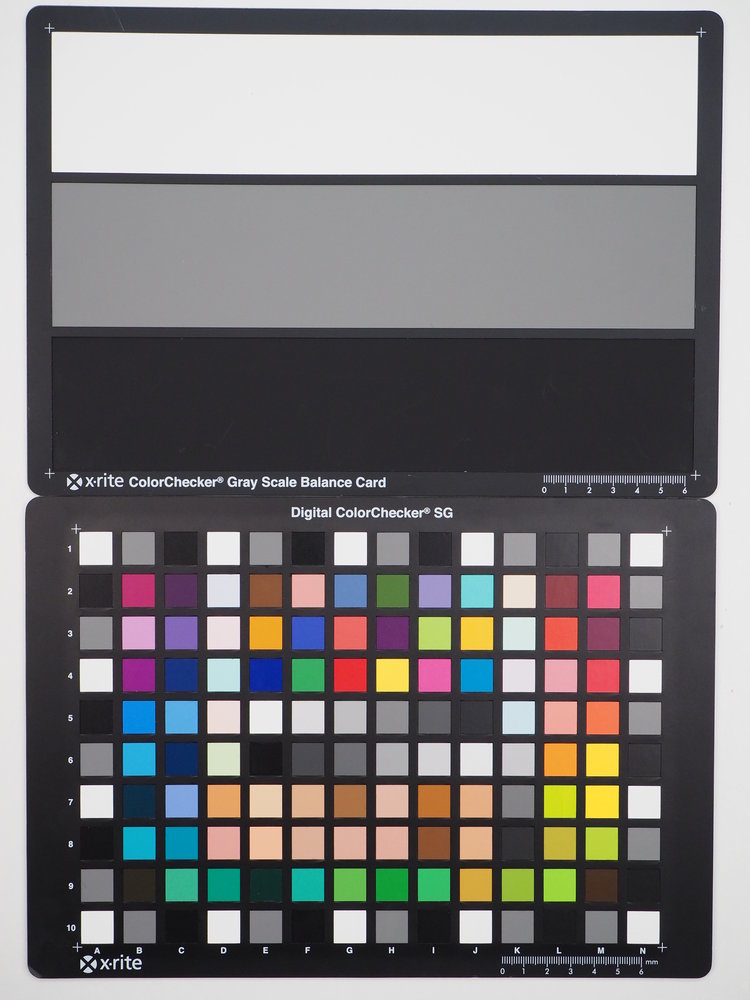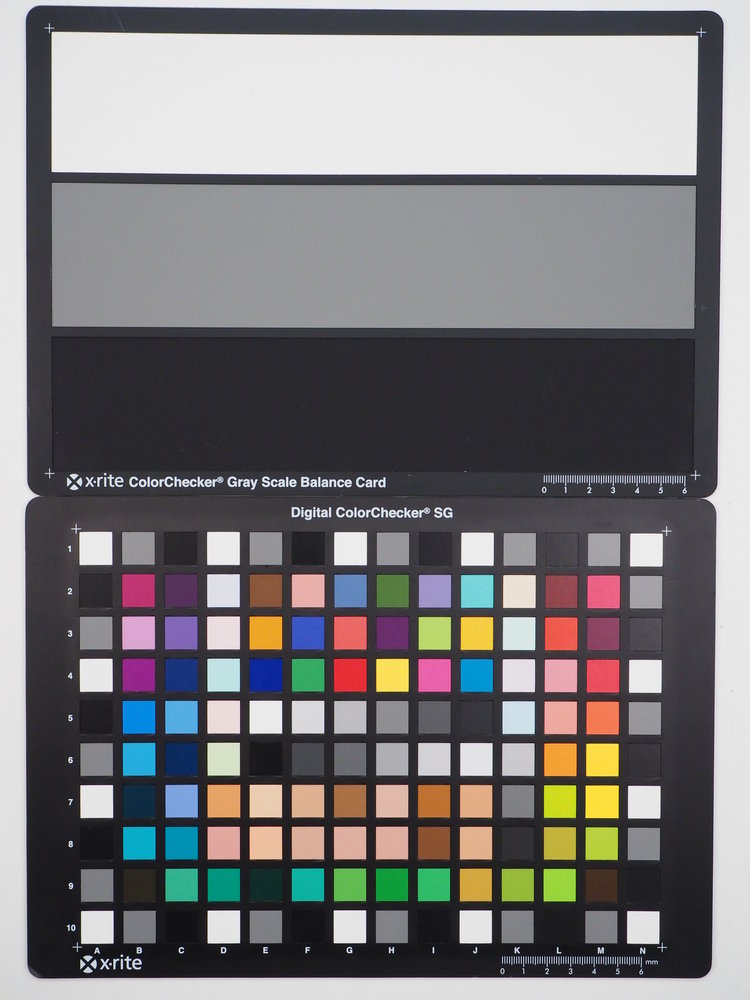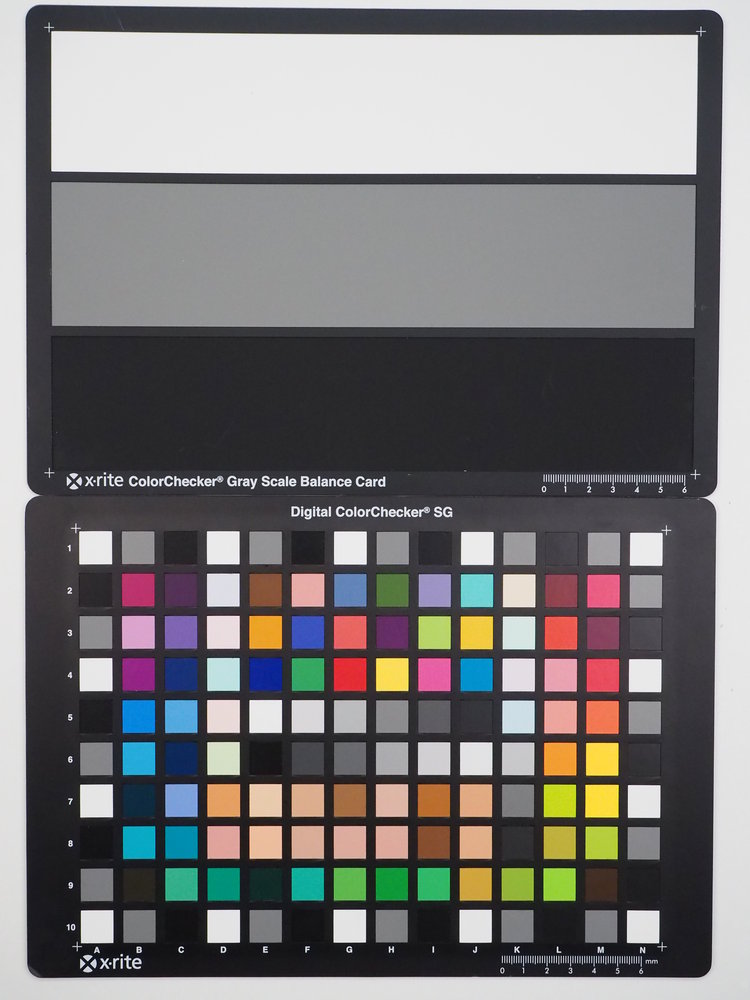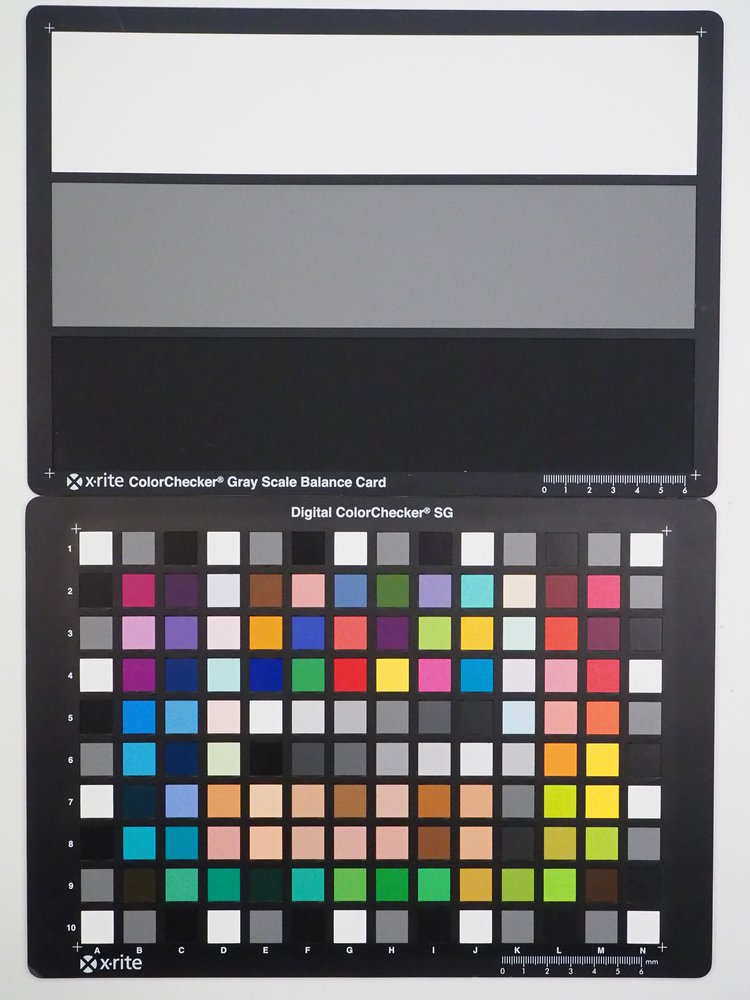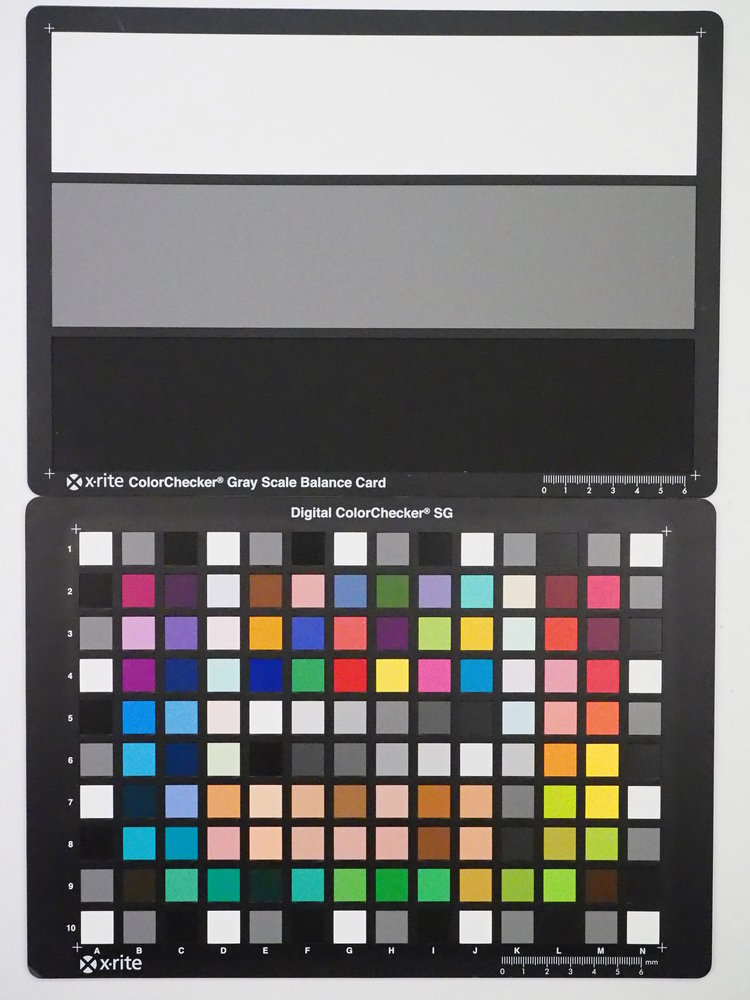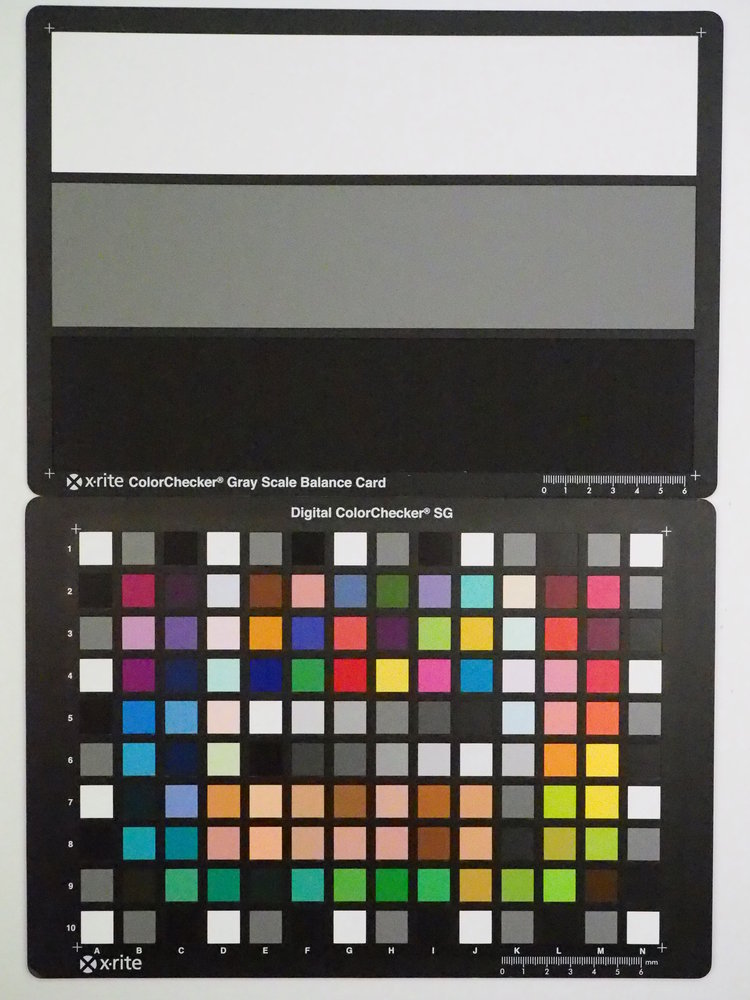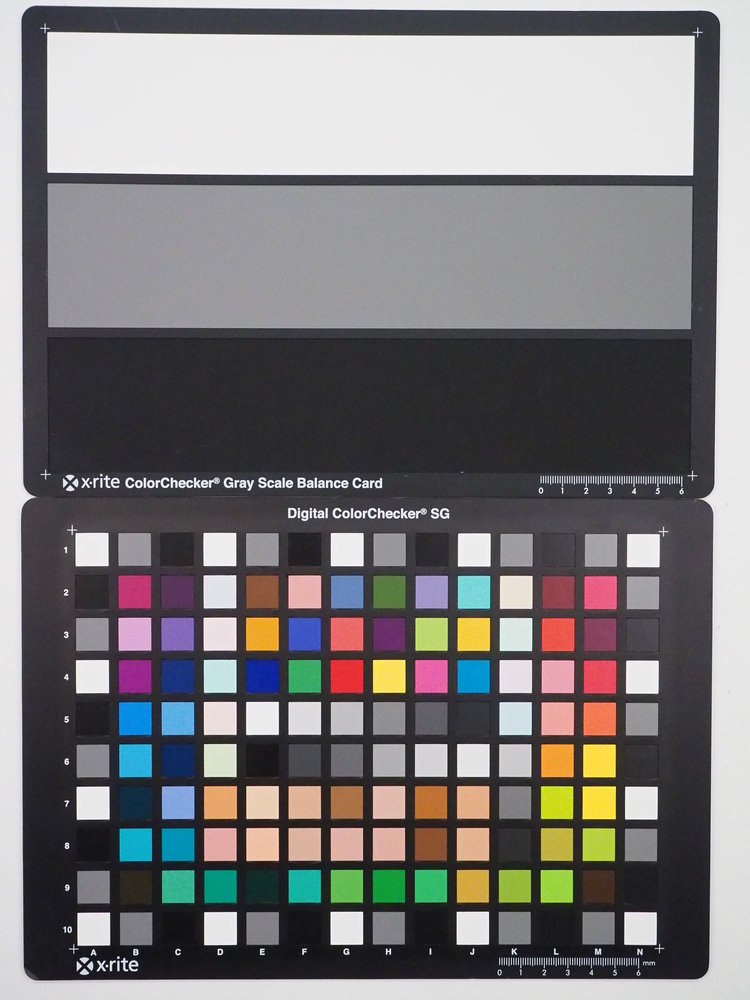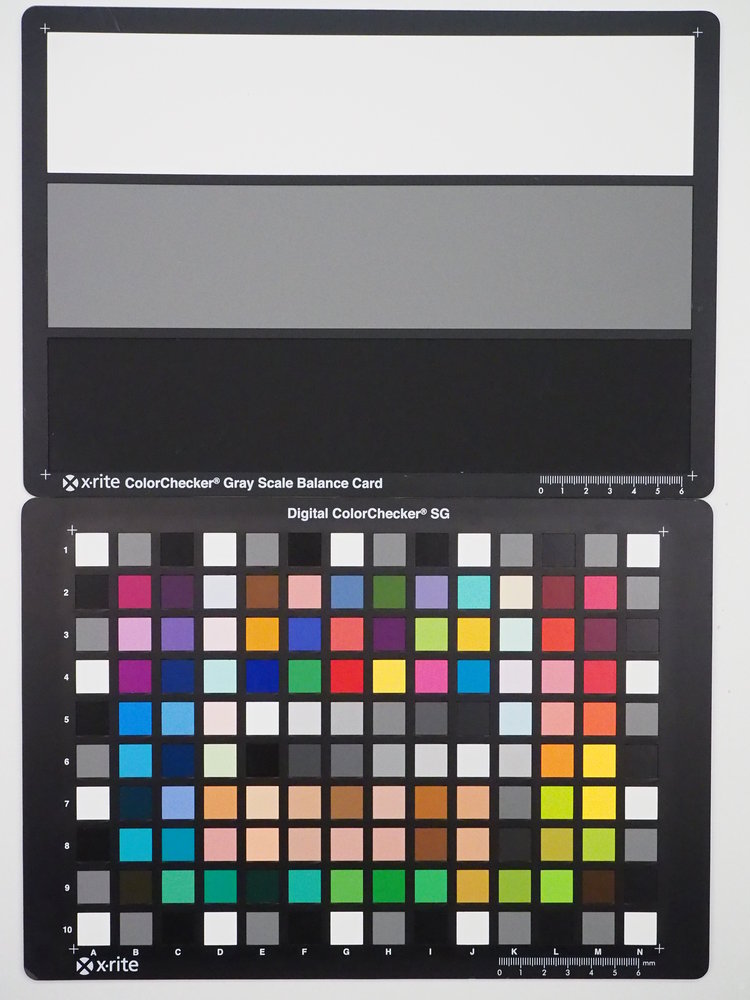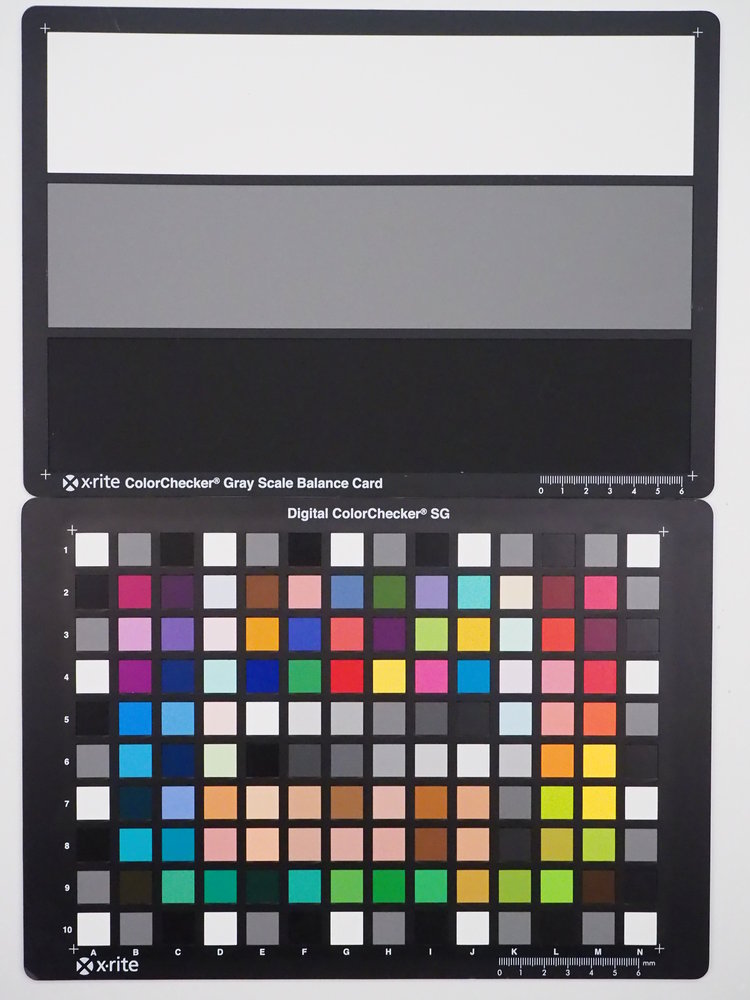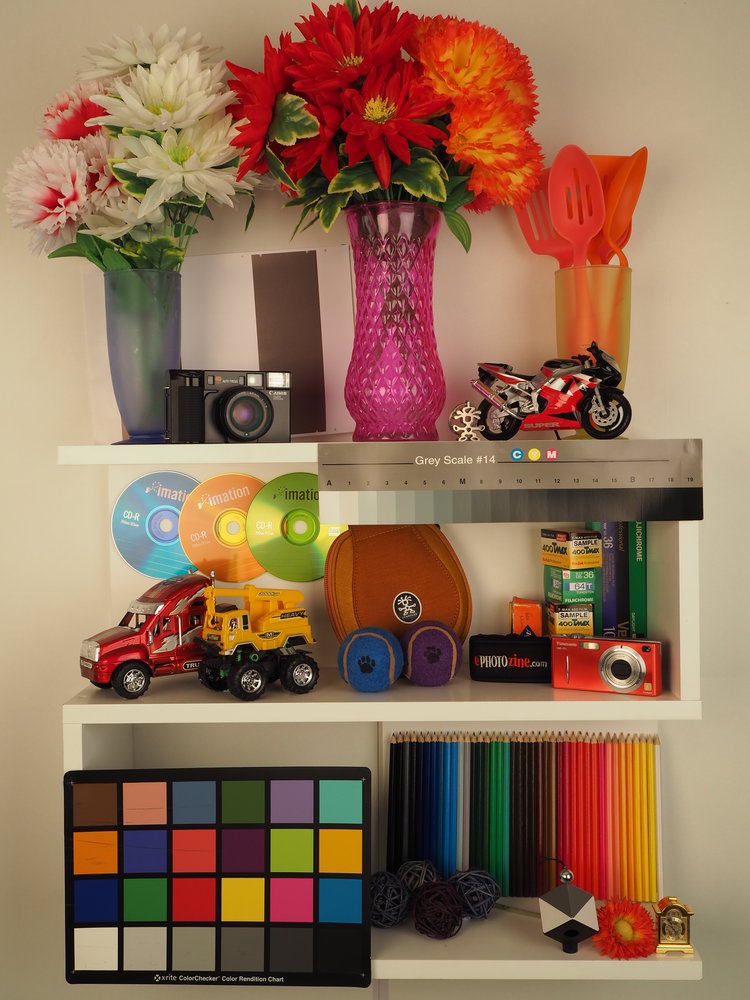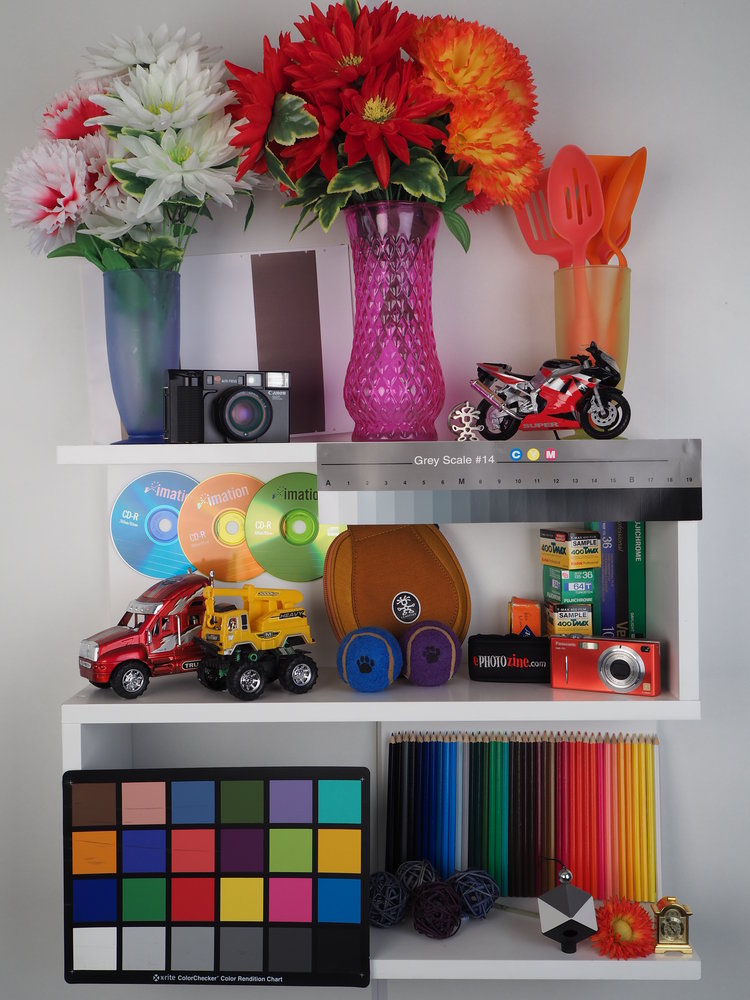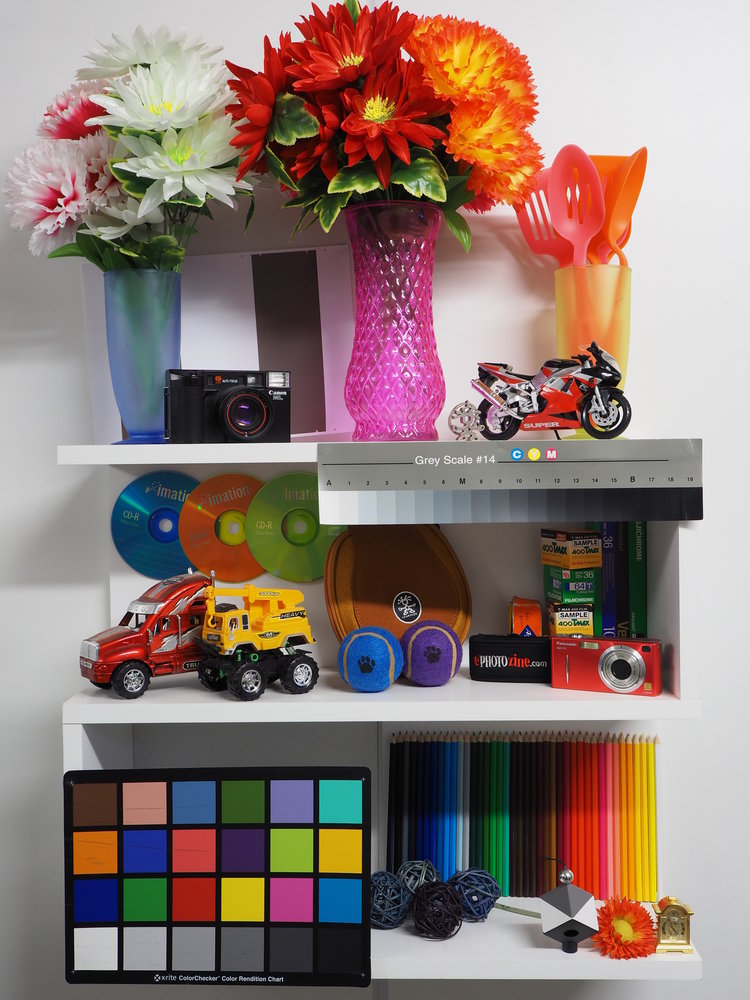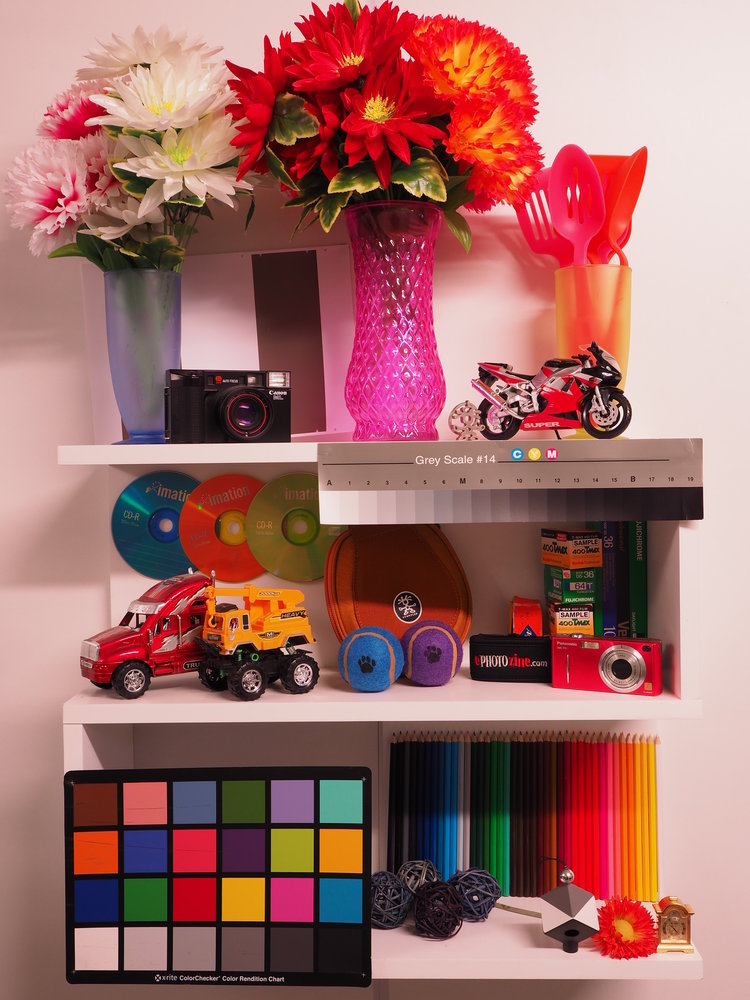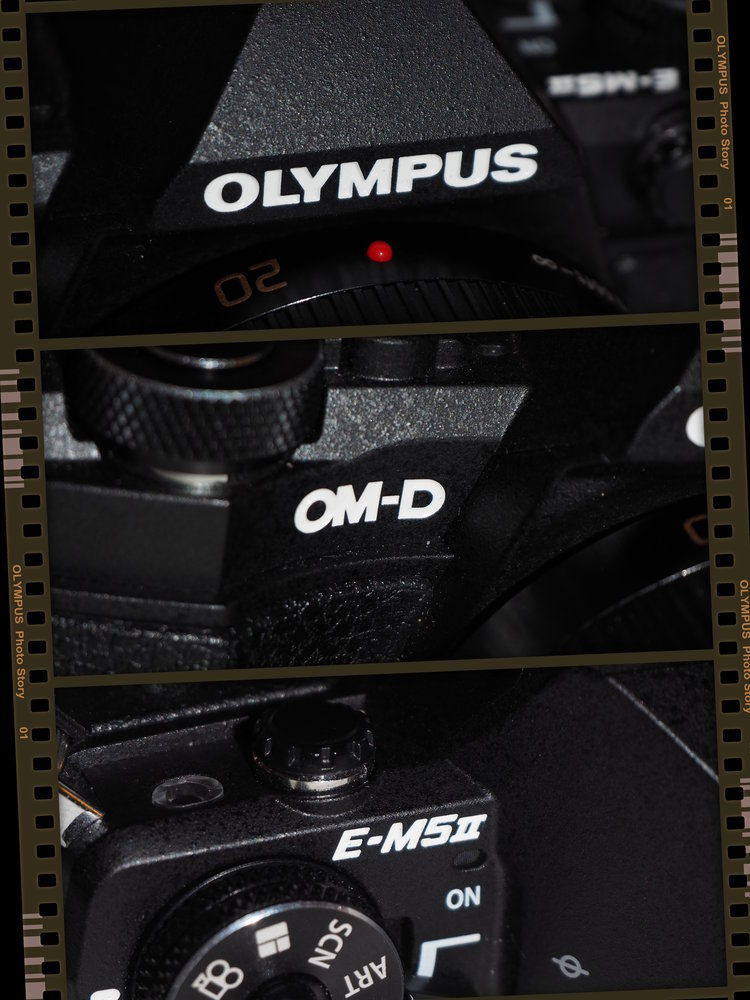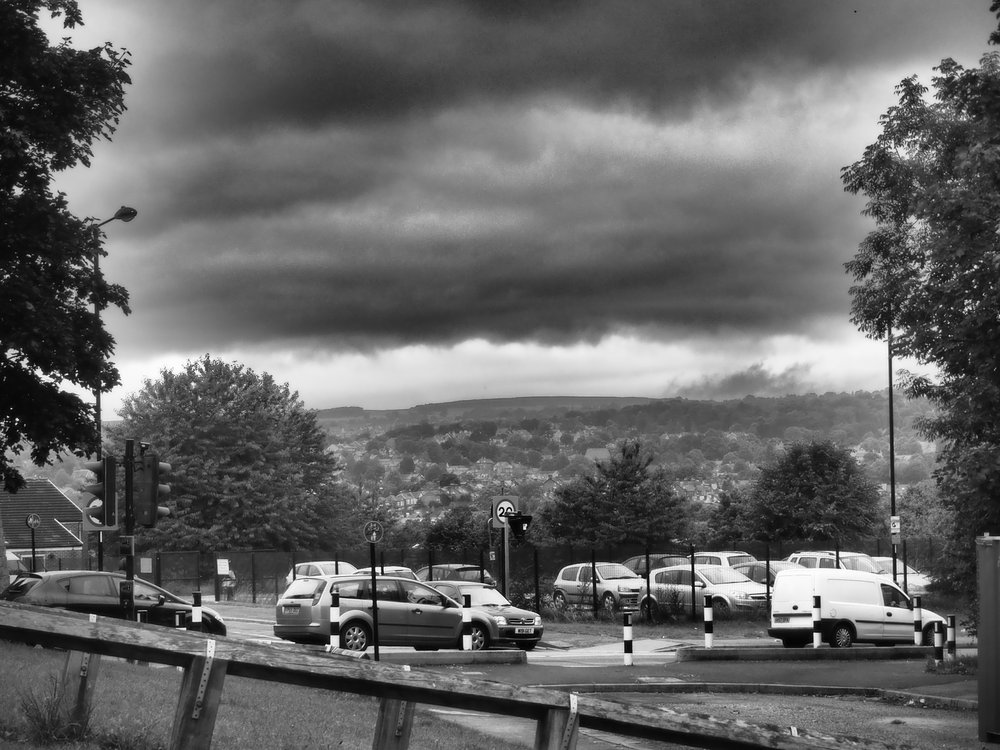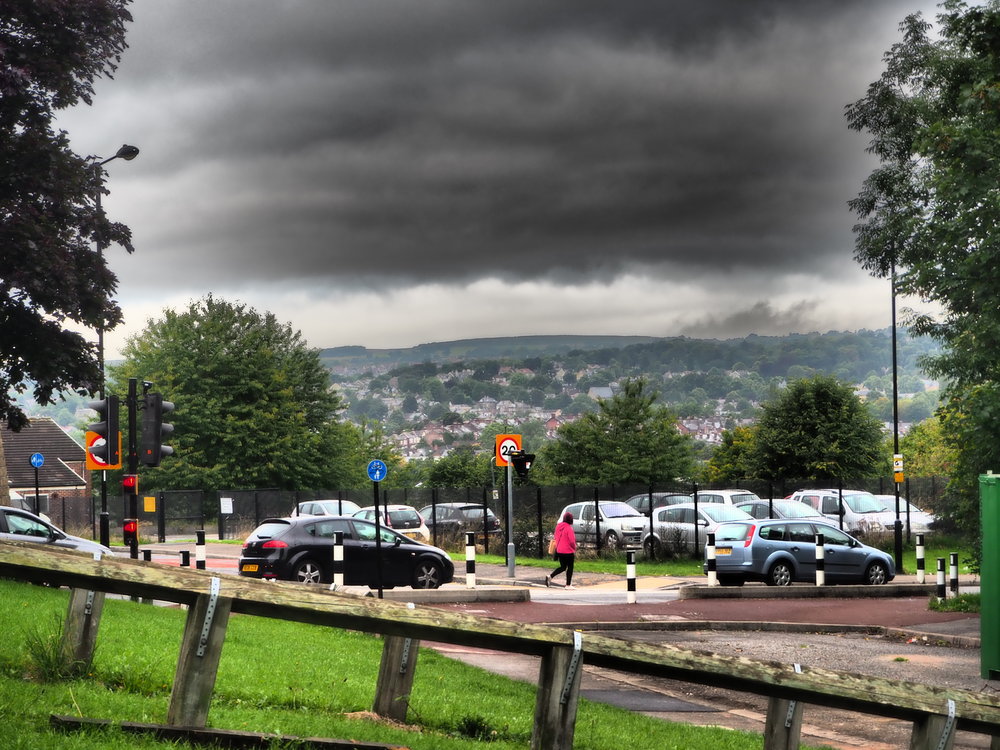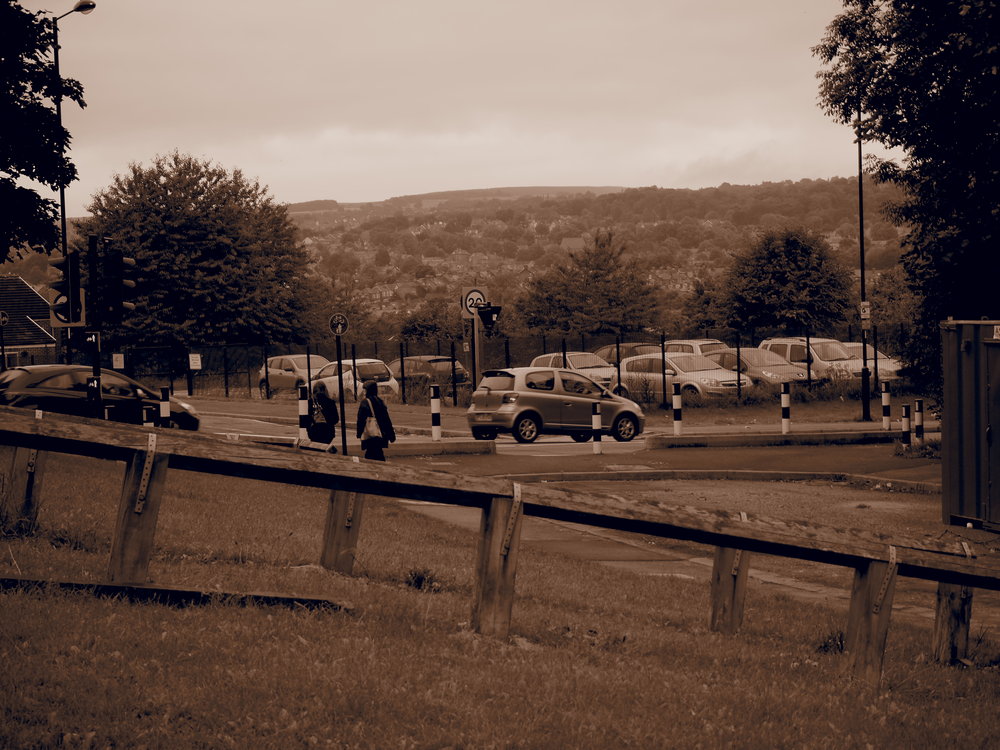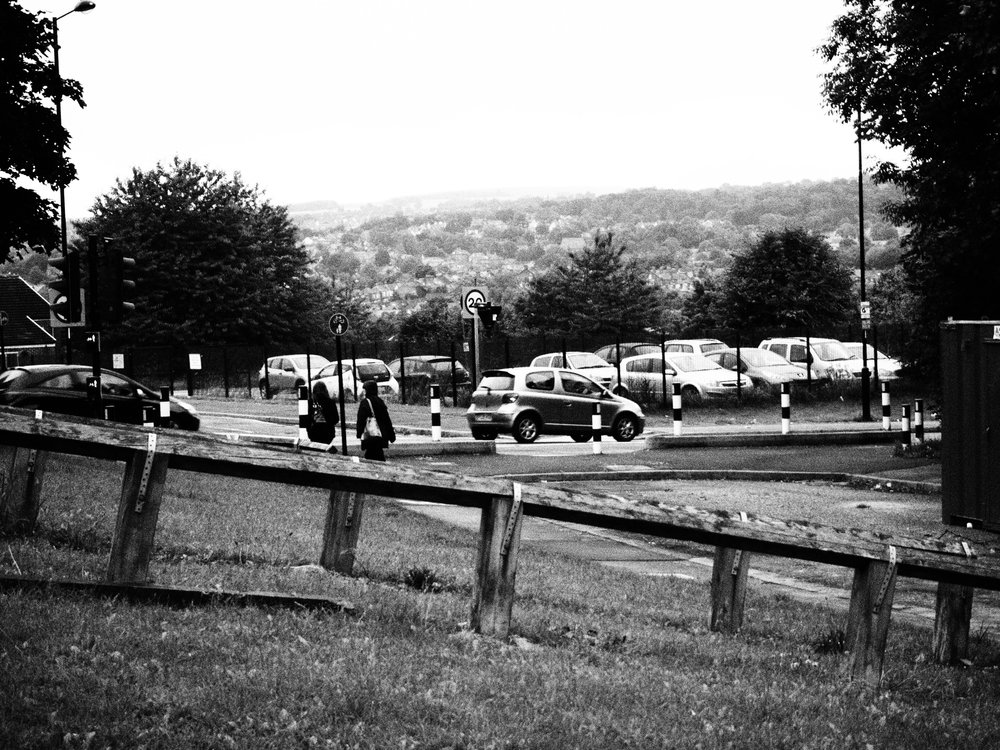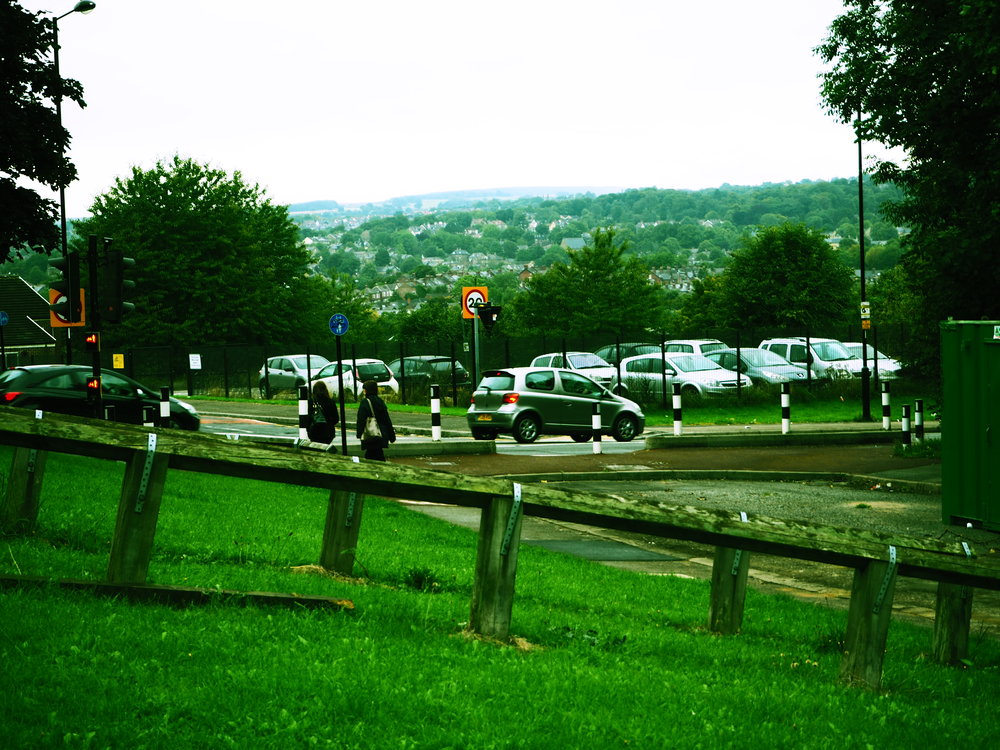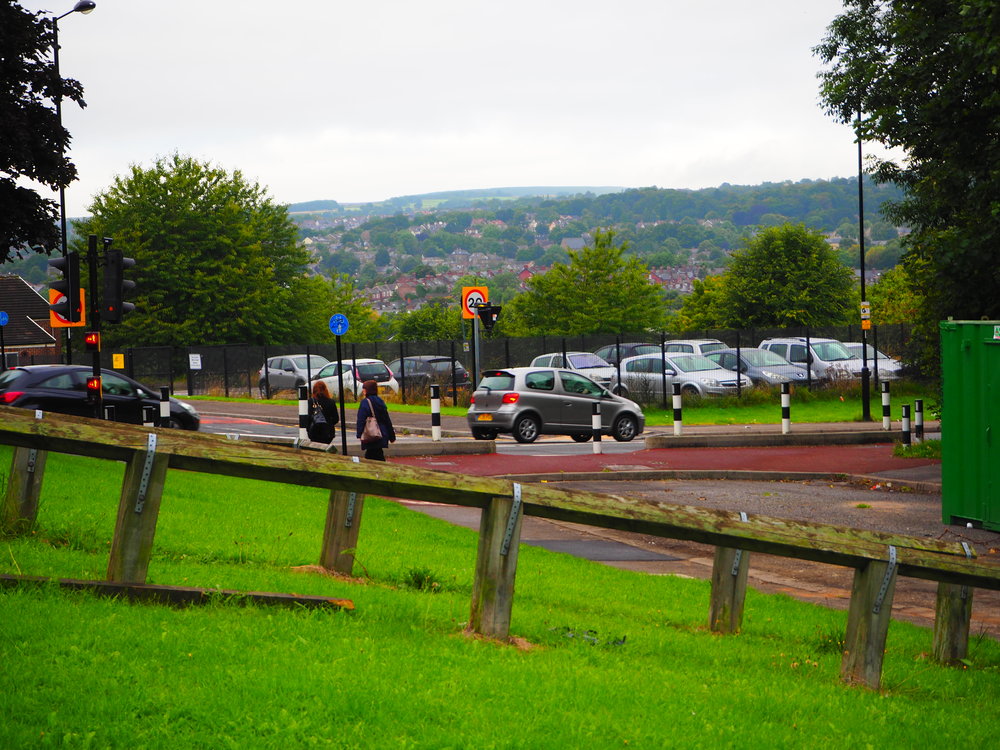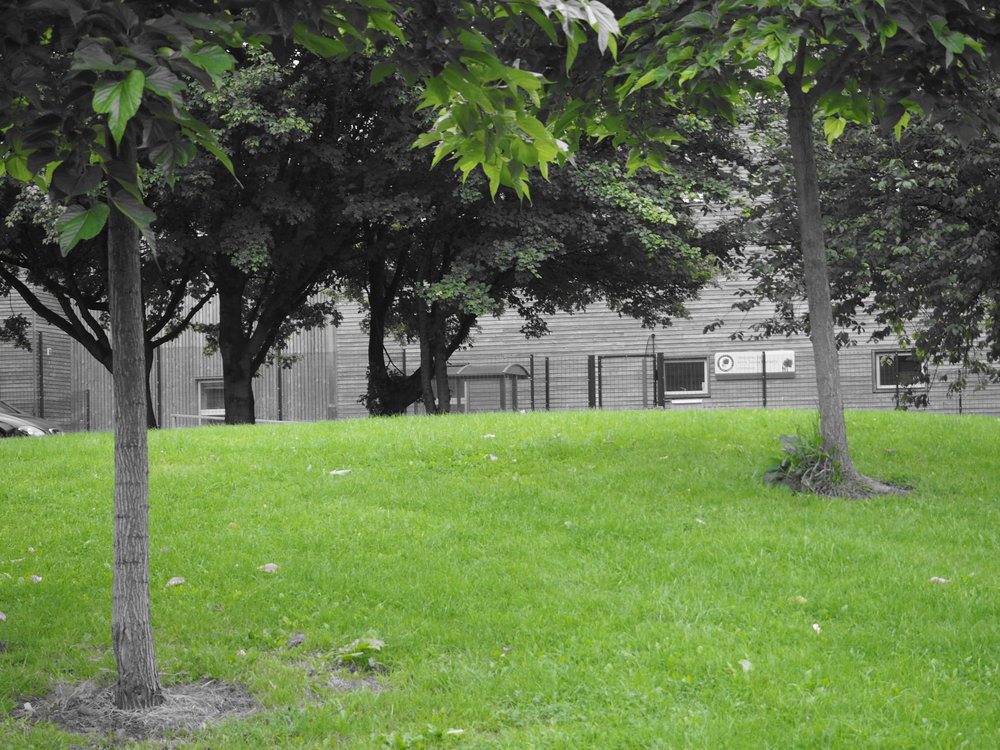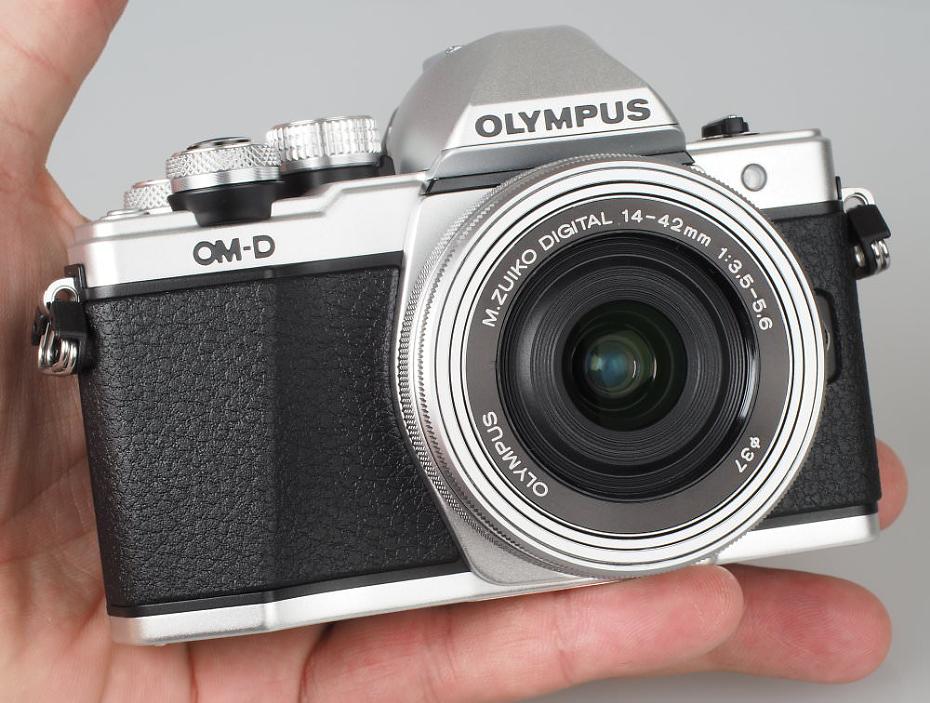
The Olympus OM-D E-M10 Mark II is the update to the OM-D E-M10 (Mark I), and sees the camera get a refreshed design, along with a number of other updates, including a larger 2.36million dot EVF, 5-axis image stabilisation, increased continuous shooting speed of 8.5fps, improved video and more.
Olympus OM-D E-M10 Mark II Features
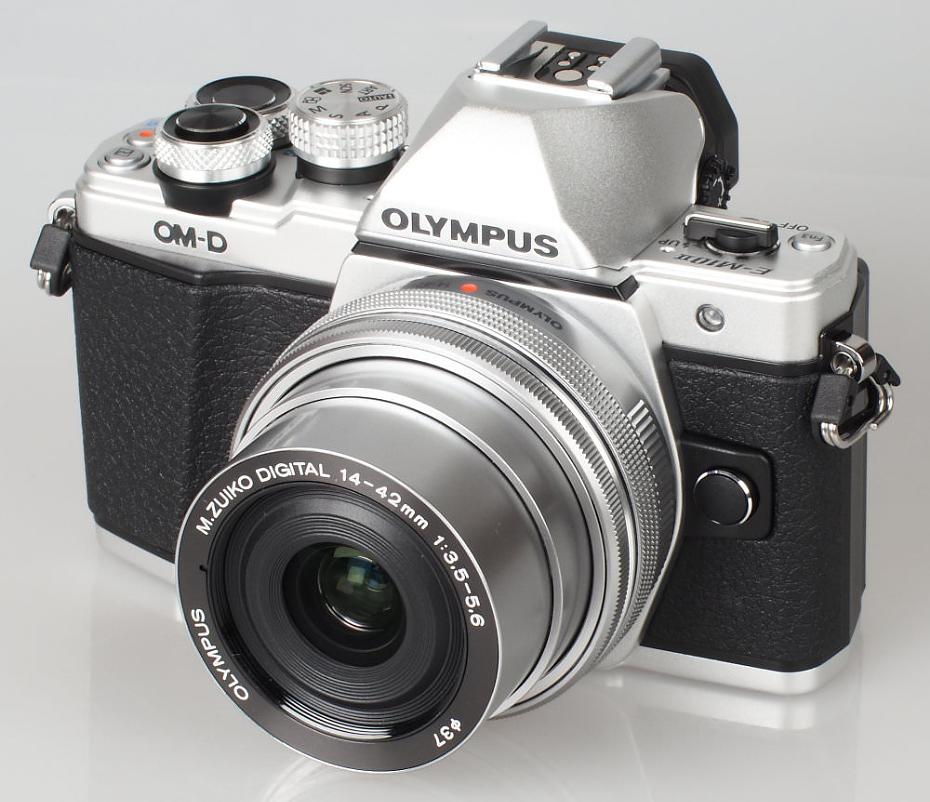
The E-M10 Mark II features a 16 megapixel Micro Four Thirds CMOS sensor, with an ISO range of ISO100 (extended) to ISO25600, and the camera uses the Micro Four Thirds lens mount, making it compatible with all Micro Four Thirds lenses.
The E-M10 Mark II shoots at 8.5fps which is a slight improvement over the 8fps that the E-M10 (Mark I) shoots in continuous shooting mode. The Mark II now features an electronic shutter that lets the camera shoot at 1/16,000s compared to the quickest shutter speed of 1/4000s on the Mark I.
Other new features introduced include:
- AF Targeting Pad - using the touchscreen
- Focus bracketing - useful for macro photography (with electronic shutter)
- Silent shutter mode (electronic shutter)
- High speed video - 120fps at VGA resolution
- 4K time-lapse video creation
The sensor is the same resolution at 16 megapixels, and the Mark II now has 5-axis image stabilisation with up to 4 EV steps of compensation*, whereas the Mark I has 3-axis image stabilisation (giving 3.5EV steps compensation*). This works with any lens attached to the camera, and works in the video mode to allow steady handheld video recording. * According to CIPA standards.
The electronic viewfinder has been updated to a higher resolution of 2.36million dots, as well as being enlarged compared to the E-M5 and E-M10, and we've highlighted some of the differences between the OM-D models below:
| E-M5 | E-M10 | E-M10 II | E-M5 II | E-M1 | |
| EVF | 1.44m dots | 1.44m dots | 2.36m dots | 2.36m dots | 2.36m dots |
| Magnification | 1.15x / 0.575x | 1.15x / 0.575x | 1.23x / 0.615x | 1.48x / 0.74x | 1.48x / 0.74x |
| Screen | 610k dots | 3inch 1037k | 3inch 1037k | 3inch 1037k | 3inch 1037k |
| Image Stabilisation | 5 EV Steps** | 3.5 EV Steps* | 4 EV Steps* | 5 EV steps* | 5 EV Steps** 4 EV Steps* |
| Continuous shooting | 9fps | 8fps | 8.5fps | 10fps | 10fps |
| Weight (body only, inc bat, SD) | 425g | 396g | 390g | 469g | 497g |
**The Olympus OM-D E-M1 features 5-axis image stabilisation, which Olympus state offers 5 EV steps of compensation, or alternatively 4 EV steps when tested to CIPA standards, so we can assume that the E-M5 would also have 4 EV steps of compensation if tested to CIPA standards.
The E-M10 Mark II is one of the more compact Olympus OM-D cameras, being slightly smaller than the E-M5 Mark II, and smaller than the DSLR styled E-M1. The E-M10 Mark II weighs 390g with battery and memory card, making it the lightest OM-D camera yet.
Built in Wi-Fi can be used for remote shooting and image transfer to a compatible iOS or Android device, and the O.I. Share app lets you add Geotag information to photos, as well as edit and share photos.
Video is recorded as FullHD video, with stereo microphones built in, and frame rates available including 60, 50, 30, 25, 24fps, with the camera also offering a high speed video mode that records 120fps at a reduced resolution of 640x480 (VGA).
A time-lapse mode will let you shoot a number of photos (up to 999 frames) and then combine them into a movie in camera - this can be recorded as a 4K video (3840x2160, 5fps), HD (5, 10, 15, 30fps) or FullHD (5, 15, 15fps) video, with optional frame rates.
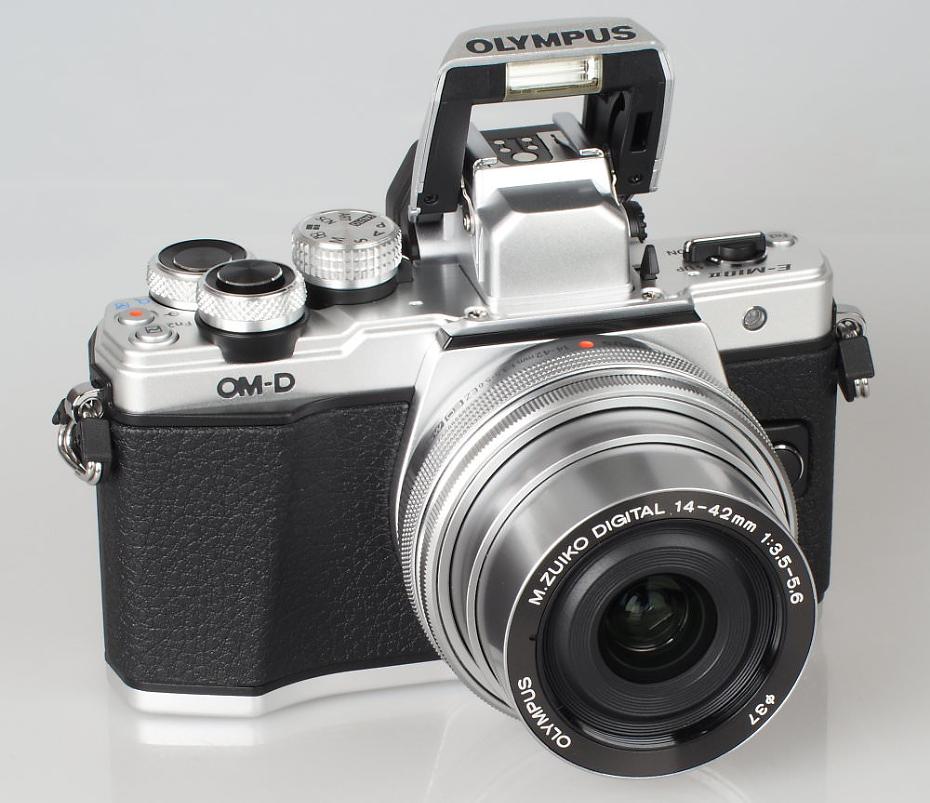
Intelligent Auto and Scene modes are built in to make the camera easy to use for beginners, along with full manual control, Art filters, and Photo-story modes for those wishing to be more creative and expand their photography. Live Bulb, Live Time, and Live Composite modes are built in that allow you to take long exposure photography, whilst also viewing the photo as it exposes on the rear screen, which is great for taking the guess work out of exposure length.
There is a built in pop-up flash, which is great for adding a little fill light, and the camera is compatible with Olympus' wireless flash system. The Olympus OM-D E-M10 Mark II is available body only, or with the 14-42mm Pancake Power Zoom lens, as shown.
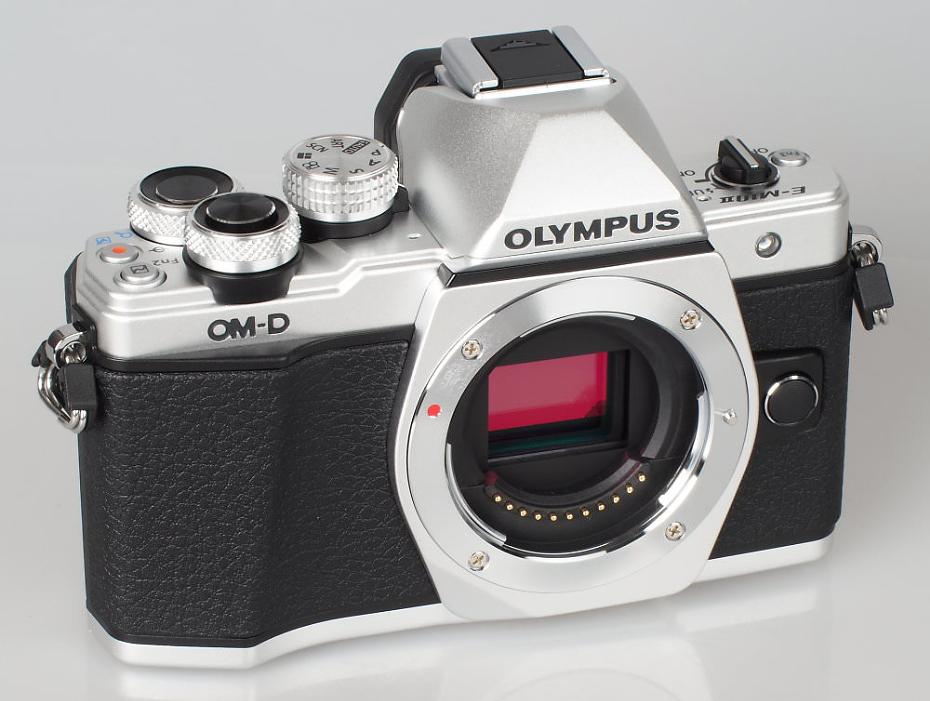
Key Features
- 16mp Micro Four Thirds CMOS sensor
- 5-axis IS (sensor shift), 4-stops according to CIPA standard
- 3inch tilting touch screen (1037k dots)
- 2.36 million dot High-Resolution electronic viewfinder (EVF)
- FullHD Video, 1080p, 60/50/30/25/24p
- 81-point FAST AF
- 1/4000s mechanical shutter speed, 1/16000s electronic available
- 8.5fps continuous shooting
- Wi-Fi built in – works with O.I. Share
- SSWF dust reduction system
- Built-in pop-up flash
- 750 shot battery life, with "Quick Sleep Mode ON"
Olympus OM-D E-M10 Mark II Handling
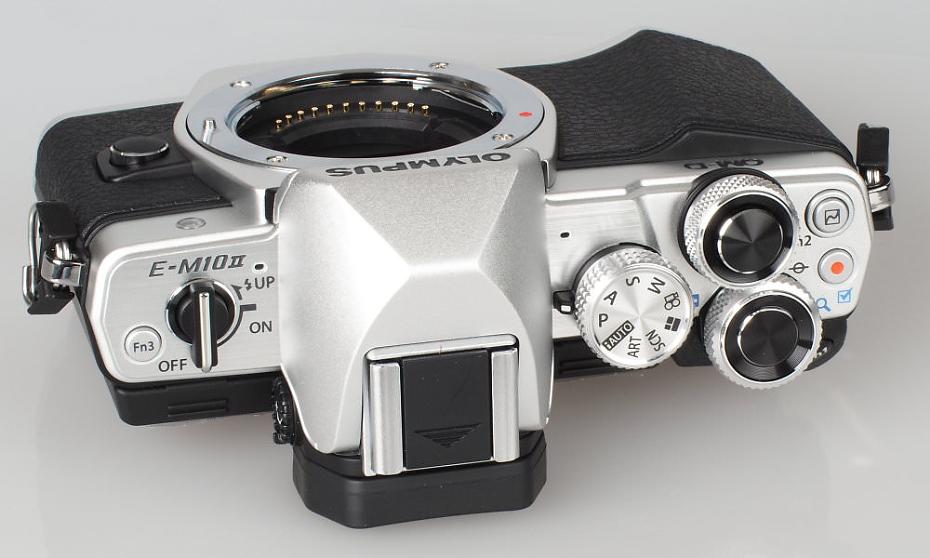
The Olympus OM-D E-M10 Mark II feels well built with a solid metal body, and the mode dial and control dials on the camera are made of metal, with a stylish finish applied to the dials, as well as the top plate which has a brushed aluminium look to it. Underneath is where you'll find the battery and memory card compartment, which has a plastic cover that is designed to pop-off. There is an optional grip available, the Olympus ECG-3, which adds a larger handgrip, however we found the grip on the E-M10 Mark II quite good for the size of the camera, and improved over the E-M10 Mark I (and E-M5).
The E-M10 Mark II looks excellent in two-tone silver and black, with design touches that pay homage to the original Olympus OM-1 film SLR. The on / off switch has the same look and feel as the original on / off switch, and the mode dial has the same textured pattern as the shutter speed dial on the OM-1.
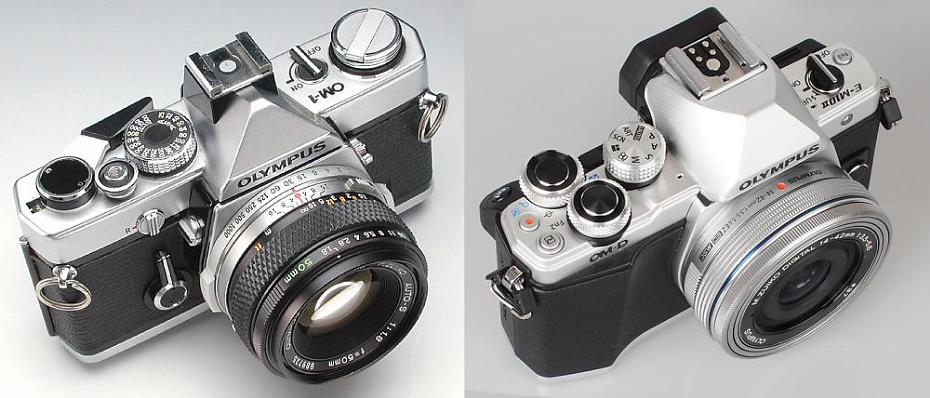
Olympus OM-1 Next To Olympus OM-D E-M10 II
The power switch is now in the same location as found on the other current OM-D cameras in the range, the E-M1, and E-M5 Mark II, and the controls on the back of the camera are also found in the same position with the same button layout as the E-M5 Mark II, which means you can switch from one camera to another and all the controls will be easy to use.
There is now an additional Fn3 button on the top lefts next to the on / off switch, and the on / off switch also acts as the flash release to make the flash pop-up when it is turned beyond the on position. In addition to the customisable Fn buttons, you can customise the video record button, as well as the 4-way controller on the back.
There are 81 focus points available, and these cover a wide area of the screen, you can also adjust the size of the focus points, as well as set the focus point by using the touch screen. When the camera is held up to your eye, you can use the screen to move the focus position without having to bring the camera away from your eye, using the new Touchpad AF option. There are continuous AF and tracking AF options, as well as manual focus aids including a magnified view, along with focus peaking. Face detection is included and can be set to give priority to the closest eye, or the left or right eye, depending on your preference.
The electronic viewfinder (EVF) is a higher resolution than the E-M10 (and E-M5), and larger than both, with 1.23x magnification (compared to 1.15x), although not as large as the E-M5 Mark II and E-M1 (with 1.48x magnification). The EVF looks good with a quick refresh rate, and good colour reproduction. S-OVF is a new feature that stands for "Simulated Optical Viewfinder" - this mode does not show you the changes made to shooting settings prior to shooting, and is designed to show you the scene as your eye would see it. The screen is a high resolution 3inch touch-screen, with good viewing angles and excellent colour and detail.
The shutter sound is reasonably quiet, but not as quiet as the E-M5 or E-M5 Mark II.
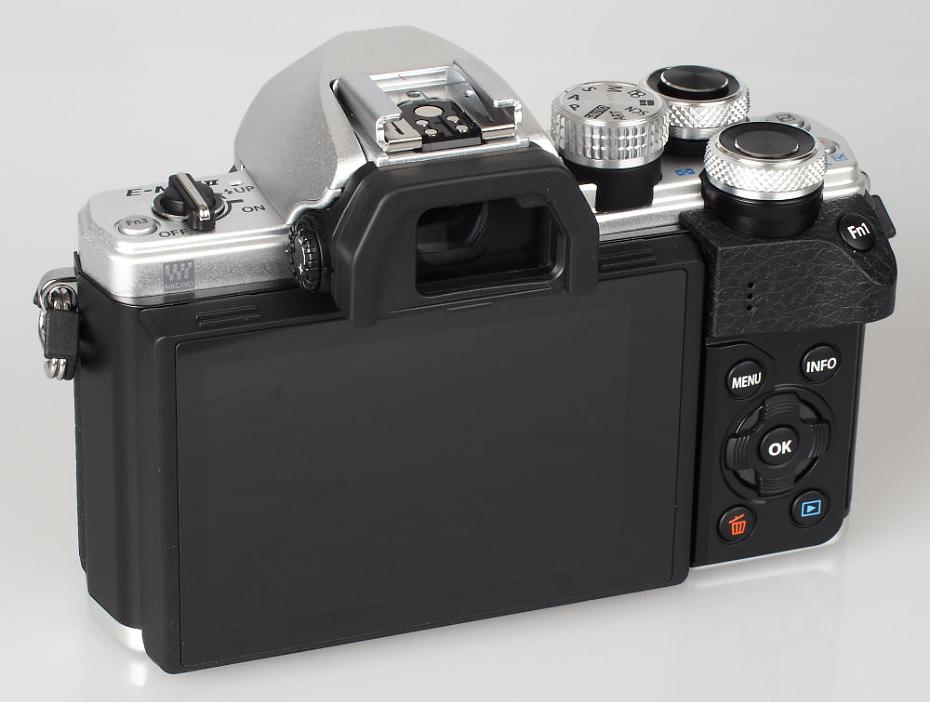
The menus have not changed since the last Olympus camera, and can take a little while to get used to. This is one area where Olympus could definitely improve. There is built in help available, that can be switched on and off with the Info button. The more basic settings are found within the first few menus, with the more advanced settings found within the colour coded custom menus. To quickly change settings on the camera, you simply press the OK button and the super control panel comes up letting you quickly change settings on the rear screen. Once you become familiar with the controls it becomes fairly easy to change settings quickly.
Wi-Fi features - Built-in Wi-Fi gives the ability to use a smartphone for remote shutter release, and setting up the connection is very easy as you simply need to scan a QR code on the camera screen using the O.I.Share app (available for iOS and Android devices). You can download and share images, apply art filters and other effects, as well as use the app to geo-tag images. You can use the touch-screen of the phone to set the focus point, as well as take photos, as there are a number of time-lapse options available as well.
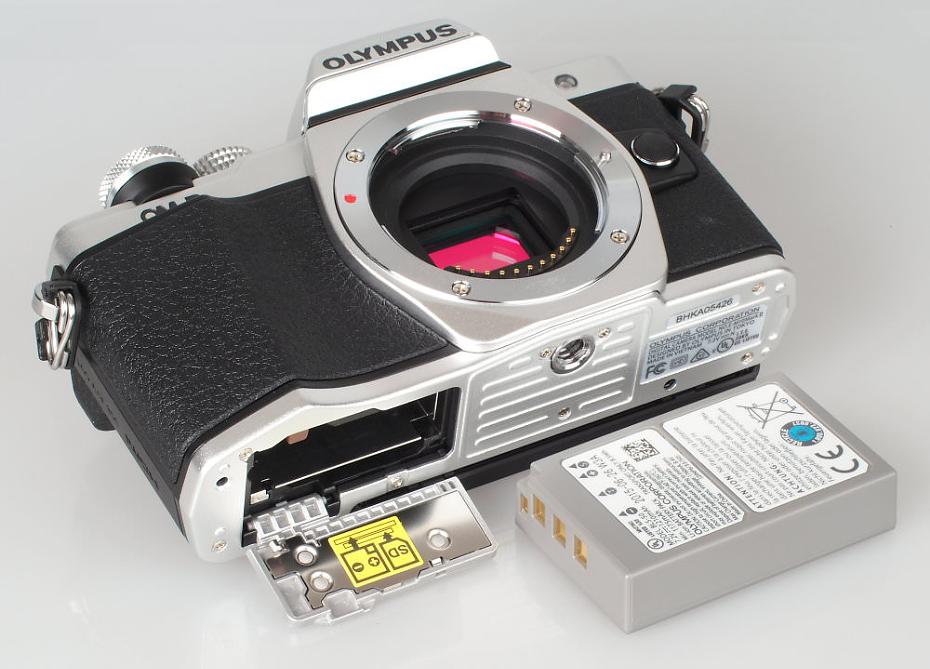
Battery life - Battery life is rated at 320 shots according to Olympus / CIPA test results, which is average for this class of camera, however this can be extended to 750 shots with "Quick Sleep Mode" switched on.
Olympus OM-D E-M10 Mark II Performance
The performance section is where we look at the image quality performance of the camera. Additional sample photos and product shots are available in the Equipment Database, where you can add your own review, photos and product ratings.
Speed - We took a number of shots to test the camera's responsiveness, from switch on to first photo, shot to shot, focusing speed etc. We take a number of shots and then use the average to ensure accurate and consistent tests, making it easy to compare with other cameras.
| Shutter Response | <0.05secs |
| Wide - Focus / Shutter Response | 0.125secs |
| Full zoom - Focus / Shutter Response | 0.125secs |
| Switch on Time to Taking a Photo | 1.1secs |
| Shot to Shot without Flash | 0.35secs |
| Shot to Shot with Flash | 1.3secs |
| Continuous Shooting - JPEG (shots before slow down) |
8.2fps (31 shots) |
| Continuous Shooting - Flash | 1.1secs |
| Continuous Shooting - RAW | 8.2fps (18 shots) |
Shutter response and focus speeds are both very good, although there is occasionally a very slight delay as the image stabilisation system kicks in. Continuous shooting is quick at 8.2fps whether shooting JPEG or raw images.
Olympus OM-D E-M10 Mark II Sample Photos
Sample Photos - Exposure is reliable, with the camera delivering pleasing results straight from the camera, with excellent colour saturation and skin tones. JPEG results are excellent, although it's possible to recover additional highlight and shadow detail by processing the raw files. For the most part this shouldn't be needed, as dynamic range is good, and the camera has a number of options to expand this, including Shadow Adjustment Technology, Highlight / Shadow tone control, plus HDR shooting. Portrait photos taken with the built-in flash show little to no red-eye.
Olympus OM-D E-M10 Mark II Lens test images
Lens Performance - The 14-42mm pancake zoom lens isn't the sharpest lens in the World, and better results can be achieved by investing in a prime lens, however for a first lens for the camera, it performs reasonably well, is quite resistant to flare, and is pleasantly compact. Distortion, including barrel and pincushion is automatically corrected in-camera, and there is an option that can be switched on to correct for shading compensation (vignetting). Purple fringing and chromatic aberrations were occasionally present when taking photos of high contrast subjects, such as trees against a bright sky. Focus is reliable, and the face-detection and eye-focus feature is particularly useful for portrait photos. Macro performance is reasonable with the 14-42mm pancake zoom lens, although a macro lens filter is available as an optional accessory to get even closer. Alternatively there are a number of macro lens available from Panasonic (30mm), Leica (45mm) and Olympus (60mm). Image stabilisation does a good job of keeping shots sharp even when shooting in low light or at the telephoto end of the lens. The focus bracketing shoots using the electronic shutter, and can be set to shoot up to 999 frames. To create the focus stacked image you then need to use software on your computer. Shutter shock can be an issue, at some shutter speeds, however the anti-shock option can help resolve this.
Olympus OM-D E-M10 Mark II ISO test images
ISO Noise Performance - For the lowest noise and best detail possible we would recommend using ISO100 to ISO800, as images have low levels of noise and good levels of detail. For lower light situations ISO1600 to ISO3200 still provides good results, although noise increases and detail is reduced. At ISO12800 noise levels become strong and we would recommend avoiding this setting if possible, although results may still be useful if resized and used on the web. ISO25600 is best avoided as noise is extremely high, and detail is very low. Noise filter options let you set the noise reduction to Off, Low, Standard and High, and for more detailed photos at the risk of slightly higher noise levels then setting the noise reduction to Low could be a good idea. There is a slight improvement in noise performance compared to the E-M10, although results are roughly on a par with the E-M5 Mark II.
Olympus OM-D E-M10 Mark II White-balance test images
White Balance Performance - Auto White Balance (AWB) performs well under tungsten and fluorescent lighting, often producing better results than using the presets. The camera has an option to "Keep warm colour" when using auto white balance under tungsten lighting, which can be useful for capturing the mood of a scene. The fluorescent preset gives a magenta colour cast.
Olympus OM-D E-M10 Mark II Digital filters
Digital Filters - There are a number of Art Filters, including Pop art, Soft focus, Pale and Light Colour, Light Tone, Grainy Film, Pin Hole, Diorama, Cross Process, Gentle Sepia, Dramatic Tone (Colour or Black and White), Line Art, Vintage, Partial Colour, and Watercolour as well as Art Bracketing that will apply as many effects as you choose to one image you take. Each filter has a number of options and additional effects that can be applied such as a vignette, a frame, or different black and white filters when shooting with one of the black and white effects, and the original raw file is recorded as well. The camera does not have an automatic panoramic mode, instead simply has a panoramic assist scene mode, where you have to stitch the photos together later on your computer.
The camera features photo story mode - there is a choice of 4 different styles of story boards, with frame and layout options. There are "Fun Frames", Zoom in/out, Layout, plus a speed setting that takes a continuous set of photos, great for action shots or other creative styles. The original raw image is saved as well so that you can go back to the original image if you want to.
Video - The camera records FullHD video with stereo sound, and video options include a full range of fps, including 60, 50, 30, 25, 24fps. ISO6400 is the highest ISO setting available in video. The 5-axis image stabilisation system does an excellent job of keeping video steady, even when recording handheld.
Compression options include SF (IPB), F (IPB), N (IPB), ALL-I (Max 30fps), and there are options for slow / fast recording, as well as a high speed 120fps video mode that records at a resolution of 640x480. You can switch the microphone on and off, as well as adjust the recording level to +/-10. Other options include: volume limiter, wind noise reduction, time code settings, time code settings (mode, count up, starting time), and you can put the camera into manual mode to control the aperture and shutter speed directly. For those that are more serious about video recording, the microphone socket on the E-M5 Mark II (plus optional headphone socket) may be beneficial, but for the majority of people the E-M10 Mark II will provide excellent results.
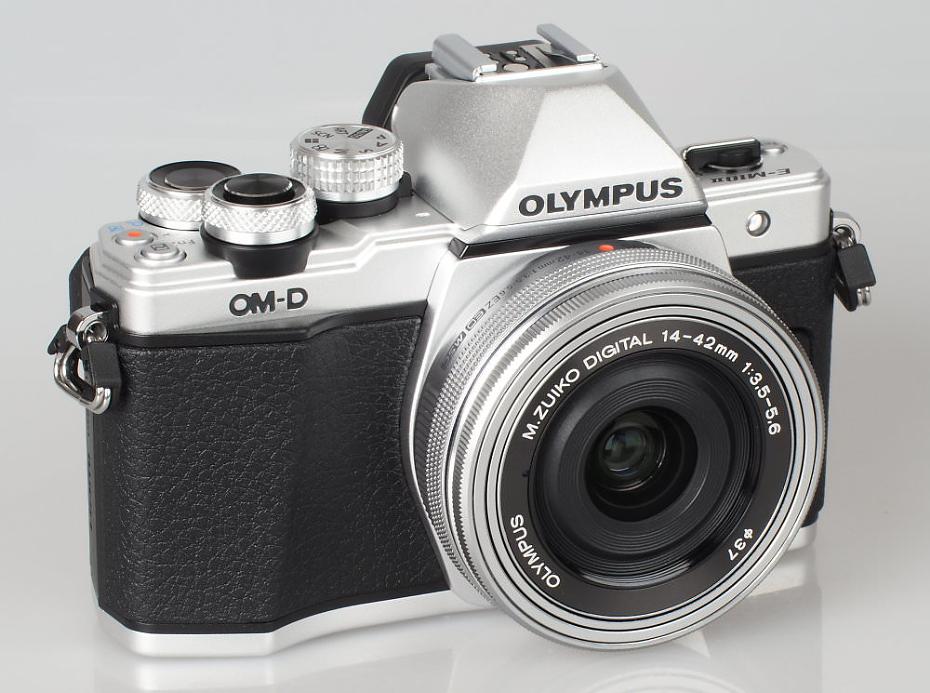
Value For Money
The Olympus OM-D E-M10 Mark II is available for £549 body only which makes it very good value for money considering the range of features on offer, and alternatives to consider include the following:
Panasonic Lumix G7, 16mp, EVF (0.7x), 8fps, 4K video, Vari-angle screen, £549 body only
Panasonic Lumix GM5, 16mp, EVF (0.46x), 5.8fps, Compact, £499 body only
Olympus OM-D E-M5 Mark II, 16mp, EVF (0.74x), 10fps, Vari-angle screen, Weather-sealed, £869 body only
Sony Alpha A6000, 24mp, EVF (0.7x), 11fps, £439 body only
Fujifilm X-T10, 16mp, EVF (0.62x), 8fps, £499 body only
Fujifilm X-E2, 16mp, EVF (0.64x), 7fps, £499 body only
Have a look at more compact system cameras in our Top 10 Best Compact System Cameras 2015. You'll also need to buy a memory card and a case or bag to keep your camera safe and protected - have a look at our complete guide to camera bags.
Olympus OM-D E-M10 Mark II Verdict
The Olympus OM-D E-M10 Mark II is feature packed, taking some of the best features of the other OM-D models, including 5-axis image stabilisation, live time, live bulb and live composite, and adding some new features along the way, with 4K timelapse video creation, focus bracketing, and an AF targeting pad. Without the weather-sealing featured in the E-M5 II and E-M1, the E-M10 Mark II is the smallest of these cameras, as well as being the lightest, yet the handling and control of the camera remains good, and the electronic viewfinder has an excellent resolution of 2.36million dots.
Image quality is excellent, with the camera delivering great JPEG images straight from the camera, with pleasing colour and saturation, as well as low levels of noise. For those that want to have full control over their photography, there are an abundance of options and settings available, as well as a number of features not found on other cameras, such as focus bracketing, and live composite shooting, as well as raw shooting. There are plenty of creative effects, including Art filters and photo story modes for those that want to create stylish photos in the camera. For most people, the 14-42mm pancake zoom lens will provide a good starting point, and the compact size of this lens makes it a great combination with the E-M10 II. However, to get the best image quality possible from the camera, a prime lens, would be recommended, particularly for better subject separation and background blur.
For the price the Olympus OM-D E-M10 Mark II offers very good value for money, with the main competitors being the Panasonic Lumix G7 (£549 body only), the Fujifilm X-T10 (£499 body only), and Sony Alpha A6000 (£439 body only). If you want to be able to record 4K video, then the Panasonic Lumix G7 is the only one to offer this feature, and you can also choose from the many Micro Four Thirds lenses available. The Fujifilm X-T10 is another excellent camera, although it does not offer the same range of lenses, with a number of X series lenses being noticeably more expensive than Micro Four Thirds lenses. The Sony Alpha A6000 offers fast continuous shooting with AF, as well as a reasonably priced range of lenses, although, like the E-M10 Mark II, the kit lens doesn't deliver the best results.
The Olympus OM-D E-M10 Mark II is an excellent mirrorless interchangeable lens camera, noticeably improving over the E-M10 (Mark I), as well as offering a great entry into the OM-D range. The E-M10 Mark II would also make a very good upgrade path for people with the original Olympus OM-D E-M5, with a larger EVF, built in Wi-Fi, and additional shooting features, albeit without the weather-sealing, and for that you would need to upgrade to the more expensive E-M5 Mark II.
Olympus OM-D E-M10 Mark II Review - Verdict: The Olympus OM-D E-M10 Mark II offers some of the best features of the OM-D range in a compact and ultra-stylish camera, and delivers excellent image quality.


